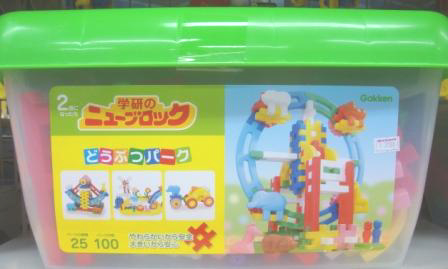Our greetings to deer lovers! Designed by Alesya. This creature only vaguely resembles a handsome horned creature, but Alesya confidently called him Deer.
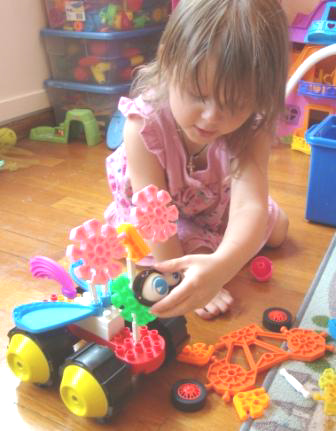
Our greetings to deer lovers! Designed by Alesya. This creature only vaguely resembles a handsome horned creature, but Alesya confidently called him Deer.

Arishka’s favorite characters – a flower and a caterpillar.

The truck does not have side walls, there are only a platform. Using a special retractable ramp, you can roll on it a car from the same set, or any other car. The body sits on a magnetic rod quite steadily.

Oh, it’s a pity we didn’t see them earlier… We don’t have enough wheels for Magna-Tiles. And we didn’t really like the silvery wheels that are mounted independently on the rods.

After struggling for a couple of days with the weak rods from the Chinese magnetic castle set, we replaced them with stronger and more colorful rods from the Magnastix (Xmag) construction set. Since the magnets in the Xmag rods are stronger, the panels held together better, and the interest of the children increased accordingly. To prevent the structures from falling apart, we built them on a metallic surface. We didn’t experiment to see if the Chinese magnetic castle set is compatible with Geomag; we decided to keep them separate. This set won’t become our main magnetic construction set, but it’s still fun to play with.
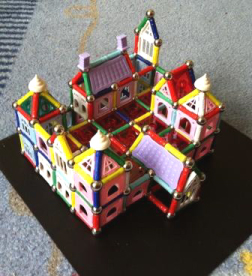
After we received our Magnetic Stick N Stack set with wheels, we found another version of Magna-Tiles on the Internet – the Playmags magnetic kit. Visually, we liked it. First of all, because of 4 potential vehicles and the original “fence” elements, from which you can build a frame for a truck, and a fence on a farm, and lay rails for a train. Now we are thinking…
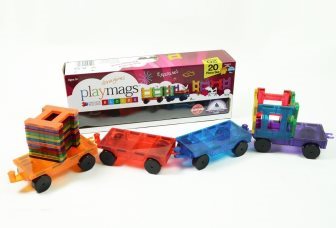
The Cri-Co-Co Constructor was invented in 1989 by Alexander Kushelev and Dmitry Kozhevnikov. They patented it in 2001, then upgraded the set in 2007. It reminded me of the English building set Connecta-Straws. You can also build from cocktail tubes.
Building straws, also known as building tubes, are a popular type of construction set with unique possibilities. They allow you to create silhouettes and contours of different objects and animals. All crafts from these sets can bend and move, so kids can actually play with their creations.
Instead of blocks, these sets have flexible plastic tubes, that look and act like soft cocktail straws. They can bend in any way and hold any position you want. The tubes usually attach to each other with special plastic connectors. The connectors can look and work differently in the different sets, but there are always many ways the straws can connect. The most common version is hard pins that go inside the straw’s hollow end, fixing it in place. Some connectors of this type have only one or two pins, some may have eight or ten. They also can have different forms, like sharp corners or straight rods. However, this connection type usually means that you can connect the straws only with their ends, and never with their middles.
These straws have great building potential, but, sadly, they can’t hold their shape under pressure (unlike, say, block towers that can hold something on their top). The straws’ building possibilities also depend on how long they are.
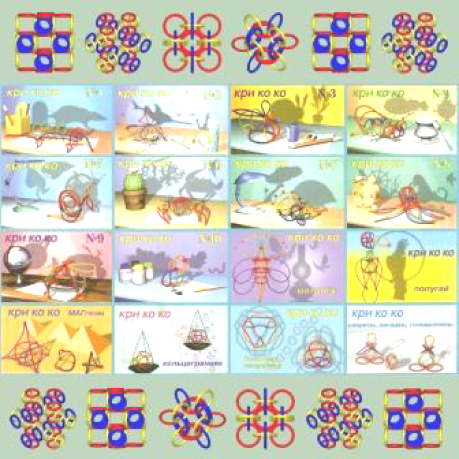
Zoob Builderz is an interesting set that focuses on moving models. Technialy, all Zoob models can move, but this set includes a string and rubber bands to create things like trampoline or a catapult. This set is a better choice for older kids, who can learn many interesting things from it. The picture shows some Zoob Builderz crafts the manufacturer offers to build.
Back in 1997, inventor Michael Grey introduced Zoob, a toy inspired by the science of motion and organism development. Zoob represents an acronym for Zoology, Ontology, Ontogeny, and Botany. Each set has rod-like pieces with joint balls and sockets on their ends. Each of these balls has small bumps on its surface, so the joints can both move and stay in a certain position if you need them to.
This innovative toy features a ball and socket connection system, mimicking the natural movement and design found in people, animals, and machines. With just five basic shapes, Zoob offers 20 different ways to connect them together.
Zoob building sets have won awards because they’re different from regular building blocks. They use plastic pieces that snap together, like gears and joints, to build all kinds of objects, limited only by your imagination. After you build something with Zoob, you can actually play with it – the pieces were designed to move after being assembled, so you can have fun with the toys you create.
Zoobs are great for helping children improve their fine motor skills. The pieces are small enough to easily manipulate and put them together, but they’re not too tiny like some other toys, so it’s easier for kids who find small objects tricky.
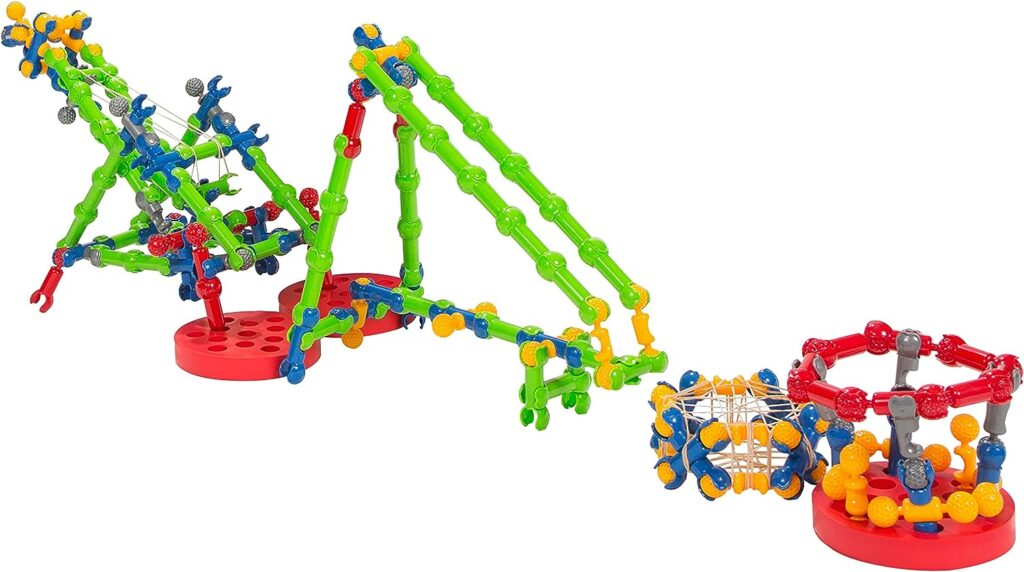
In this version of the castle, openwork and colored panels are used. Sticks are from the same set. The color panels are common ones, a decent copy of the Geomag panels. Buildings look very impressive very impressive when well-lit, especially in sunlight.
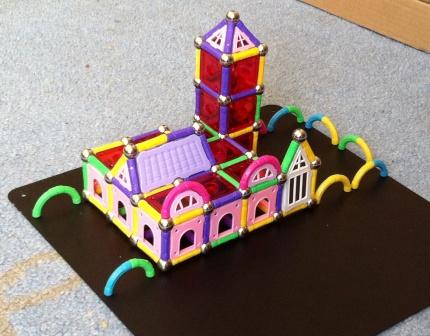
Gakken is a brand of Japanese building waffle blocks. There are many thematic sets – amusement park, cars, railroad and so on. There are even a toolbox set. I especially liked triangular and big arch-like pieces. Tha animals are 3D and don’t look like sand forms like in some other building sets. The pieces have bright and dense plastic.
Unlike Plus Plus waffle blocks, Gakken blocks have pieces of many different shapes. They have round and curved pieces, long beams and H-like pieces. The empty spaces inside the blocks also can have different sizes and shapes, so you can stack inside different pieces in different positions. All this allows even more building possibilities than the waffle blocks sets with similar pieces. However, some pieces have less connection opgtions, because they don’t have pegs on the sides, or have only one hole.
Gakken brand appeared in Tokyo back in 1946 when it became an important component of Japan’s post-war efforts to rebuild the nation. Back then, it became incredible important to properly raise a new generation that will be able to create a better future.
The founder and educator, Hideto Furuoka, created first Gakken waffle buidling blocks. He later told that his inspiration was traditional Japanese wooden houses. There he saw an idea of flat blocks people can took apart and rebuild again when they need to. So he decided to create a toy which repeats this principle. Children can connect these Japanese building waffle blocks, stack them, lay them, plug, or tuck blocks in different orientations, for example, horizontally, vertically, and diagonally.
